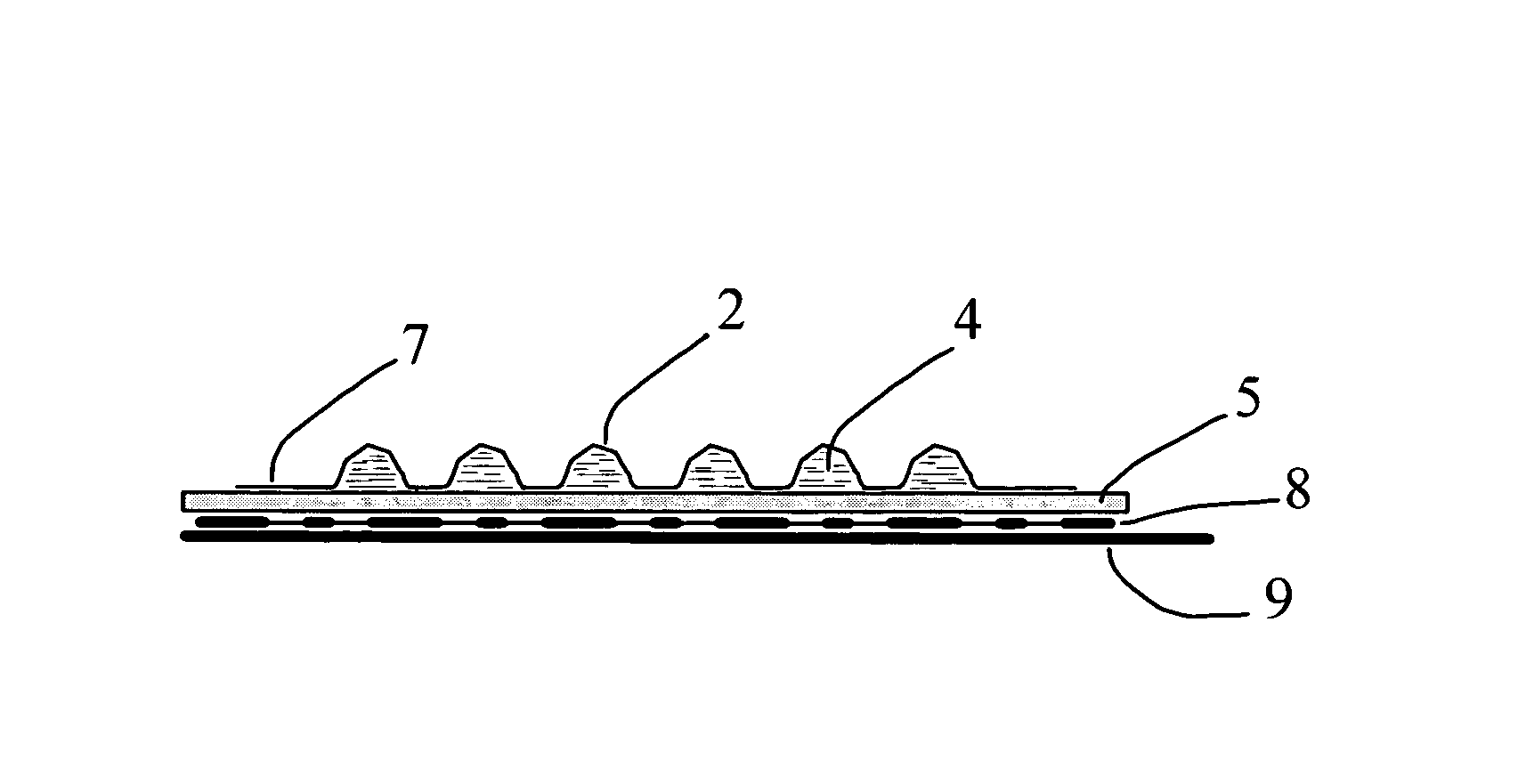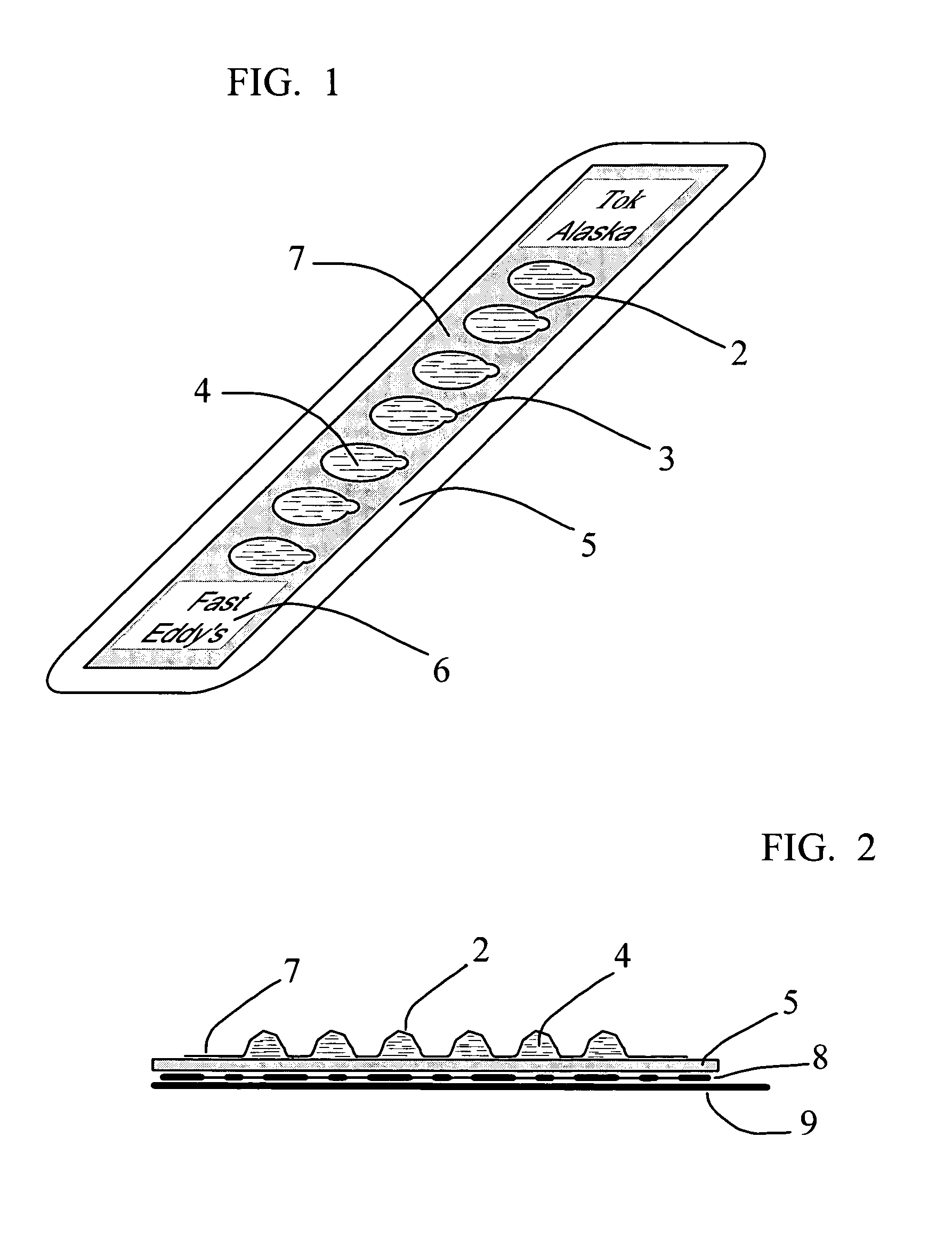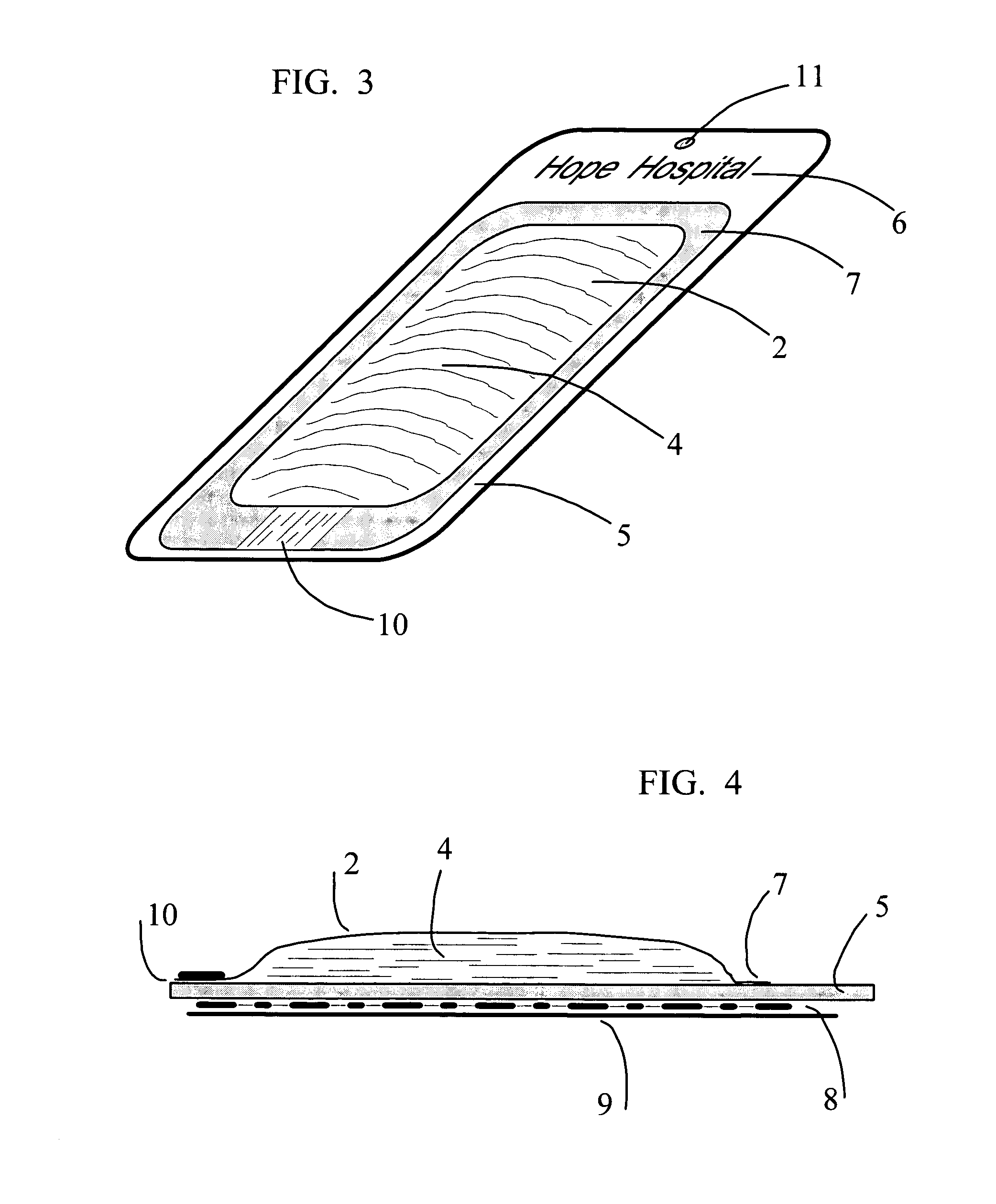Hand sterilizing apparatus and method
a technology for sterilizing apparatus and hand, which is applied in the direction of packaging goods, applications, transportation and packaging, etc., can solve the problems of many organizations burdened with hand-borne disease costs, unrealized compliance with hand antisepsis guidelines, and much more substantial damage costs
- Summary
- Abstract
- Description
- Claims
- Application Information
AI Technical Summary
Benefits of technology
Problems solved by technology
Method used
Image
Examples
example 1
[0046]Wrist Blister Dispenser
[0047]The dispenser is in the form of a common blister package card that contains a plurality of dosage wells containing hand sanitizing fluid. Each well is spaced at uniform distances from others and are typically 12 in number on the card's surface, although of course, various other alternative embodiments are easily imaginable and useful. Typically the number of wells might range between 2 and 30. Each of the wells has one basic requirement, the ability to hold and preserve the quality of the hand sanitizing fluid, typically a viscous liquid in the form of a gel such as found in several commercial offerings sold under the general designation of hand sanitizers and hand sterilizers. Each cell contains about 2 milliliters of hand sanitizing fluid, although the range of the dosage amount for an individual application can easily vary from about 0.5 ml to 5 ml depending on the product's formulation, sanitizing strength, and the coverage desired. The blister...
example 2
[0048]Blister Card Multi-Dose Package
[0049]The dispenser is in the form of a common blister package card that contains only one well containing hand sanitizing fluid. Graphic representation of an embodiment of a single well, multiple dose dispenser package is shown in FIGS. 3 and 4. A single well 2 formed of flexible polymeric film (2-mil clear, coextruded polypropylene / polyvinyldichloride / polypropylene) enclose and contain multiple doses of hand sanitizing fluid 4 (62% ethanol). The film with its filled wells 2 has a peripheral seal 7 with a relatively stiff backing 5 that facilitate handling by hands of varying size and strength and effectively lids each of the wells 2. Creation of the seal can be achieved by a number of means well known in the art, herein the common technique involving heat and pressure is used to create the seal 7. Also illustrated is a release point 10 for the fluid 4 in the form of a self-closing tension valve which opens under pressure generated by finger pre...
example 3
[0050]Blister Card Package
[0051]The dispenser is in the form of a common blister package that contains the plurality of dosage wells described in the manner of Example 1. All other descriptions of Example 1 are herewith included in this example with the exception of the strapping portion for attachment to the wrist. In this example the exposed backing of the relatively flat card of the blister card dispenser package has an adhesive coating to act as an attachment means. By this adhesive means the card can be placed on the wrist directly without the need for a strapping means. Of course an appropriate adhesive should be used, a nonpermanent type would likely appeal to most wearers. The adhesive card as herein embodied could be applied to any part of the user's body including an ankle, forearm, hand, head, leg, neck, torso, wrist and combinations thereof as found appropriate. The adhesive card could also be applied to clothing or other items worn on the body like the ubiquitous identi...
PUM
 Login to View More
Login to View More Abstract
Description
Claims
Application Information
 Login to View More
Login to View More - R&D
- Intellectual Property
- Life Sciences
- Materials
- Tech Scout
- Unparalleled Data Quality
- Higher Quality Content
- 60% Fewer Hallucinations
Browse by: Latest US Patents, China's latest patents, Technical Efficacy Thesaurus, Application Domain, Technology Topic, Popular Technical Reports.
© 2025 PatSnap. All rights reserved.Legal|Privacy policy|Modern Slavery Act Transparency Statement|Sitemap|About US| Contact US: help@patsnap.com



